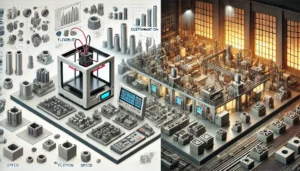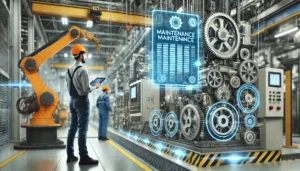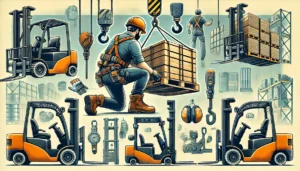Industrial activity necessitates the use of electric powered machinery, which rely on industrial belts to run. These belts are vital for movement and spinning of various parts in a machine. They promote efficiency and productivity but only after taking great care of the proper upkeep. When done properly, maintenance can boost longevity, efficiency, and performance. Implementing these can eliminate unwanted failures coming from a lack of maintenance, lower the needed amount of repairs to fix the machinery, and in the end, broaden the life expectancy of the belts.
1. Regular Inspection
Frequent inspections can allow an operator to catch signs of wear and tear before they turn into serious mechanical issues. The belts must be looked at closely for fading edges, cracks, and any other forms of damage. An inspector’s first glance should be drawn towards a belt’s surface and edges, where most damage can happen. Inspections every so often make it so that minor and extreme issues can be dealt with easily in a timely manner.
2. Proper Tensioning
In order to achieve the best results, the belt tension needs to be right. If a belt is too loose or tight, dreadfully dire results can occur as well. Tightening any belt puts extra strain on it and so does loosening, however, too much of either can herald premature damage and runs the risk of not achieving any work done efficiently. The best way to accomplish the correct balance is by using appropriate tools, such as specific strain gauges.
3. Alignment of Components
Worn out shafts, pulleys, or other components make increases in friction. Therefore, misalignment can easily wear down the belt. Checking alignment periodically is very important. When all parts are placed appropriately, stress on the belt reduces, increasing its durability.
4. Lubrication
Although belts don’t need lubrication, the pulleys and bearings that interact with the belts do. Prevent overheating and friction by lubricating all movable parts properly. Use the recommended lubricants and apply them at the right times for the best results.
5. Cleanliness
Belt movement and life span is greatly affected by the dirt build up. Wearable parts can easily break down with the build-up of debris. As customary maintenance, belts should be cleaned from time to time with suitable cleaning agents or abrasives so that no damage is caused to the belt material. Contaminations are usually on the rise in the food processing industry. An open working environment helps in curbing the contaminations.
6. Environmental Control
The conditions in which the system works can heavily impact the lifespan of a belt. Heat, moisture, and chemicals can all prove to be detrimental to the parts of the belt. If able, ensuring an ideal operating atmosphere can help improve performance. Measures such as setting covers over belts and setting optimum levels of temperature help reduce the severity of the conditions.
7. Load Management
The load of a conveyor system should be carefully managed as excessive load may damage the belt and other parts of the system. When using a conveyor system, take care that the load is not more than the belt rating. As the machinery gets stretched from the overuse, the wearing of the belt increases with the increased risk of snapping. Load regulators and monitoring equipment can help limit the risks posed by overloading.
8. Preventive Maintenance Schedule
Based on the requirements for operation and the needs of the users, a schedule for preventive maintenance should be created in notes to the maintenance manager. Adhering to routine maintenance schedules also helps mitigate adverse functional failures by system components from occurring in the wrong place at the wrong time. All activities performed must be logged in order to improve the performance of belts operated in the system, as well as, recurrent failures.
9. Training And Awareness
Train the workers to ensure they know the procedures for installation and servicing the use of the belt properly. Such personnel can detect emerging problems at an early stage and perform maintenance adequately, thereby promoting the functioning of the conveyor system. Enhancing competence of employees can be achieved through regular training which is known to improve the efficiency of operations.
10. Use of Quality Belts
Purchasing custom belts for specific applications can save service cost and increase durability. Quality belts have an initial higher cost compared to their low-quality counterparts but tend to save money in maintenance and poor performance over time. Talk to manufacturers or suppliers to identify belts suitable for your operational conditions.
11. Prognostics and Health Management
Set up monitoring systems to measure belt health parameters during various application workflows. Advanced diagnostic metrics can identify changes during operations, including abnormal vibrations, changes in temperature, and even unusual sounds that can hint towards future problems. Continuous monitoring gives advanced, minor problems that can be solved before they get worse.
12. Proper Storage
Belt performance can be optimized by virtue of adequate preventative maintenance and storage. When not in use, belts should be kept in a temperature controlled, dry space away from chemicals and direct sunlight. Failing to do so increases the chances of material erosion meaning the belts entail lower performance than expected. These items should not be stored under high or low temperature and humidity which could damage the material and the structure.
13. Avoiding Abrasive Materials
Belt contact with abrasive objects that can cause damage to the surface should be minimized. Placing protective barriers can guard belts from protruding objects and rough edges. If contact with abrasive objects cannot be avoided, switches can be made to more durable and suitable belts.
14. Regular Training and Updates
Understand the new maintenance practices, and belt technologies and gain information on best industry practices. Ensure the maintenance procedures are updated to include new knowledge and technologies to enhance its effectiveness. Industry seminars, workshops, and training are primary sources of new intelligence which can keep your team up to date.
15. Documentation and Record-Keeping
Completely document all maintenance routines performed, including inspections, repairs, and replacements made. Documentation assists in determining belt performance with time, troubleshooting frequent problems, and predicting maintenance requirements. A digital maintenance management system can simplify maintenance documentation and provide easy access to maintenance records.
Whether you take these steps or not, your preventive maintenance does protect your equipment investment. It result in improved overall performance and reduced downtime, leading to enhanced lifespan of industrial belts.










